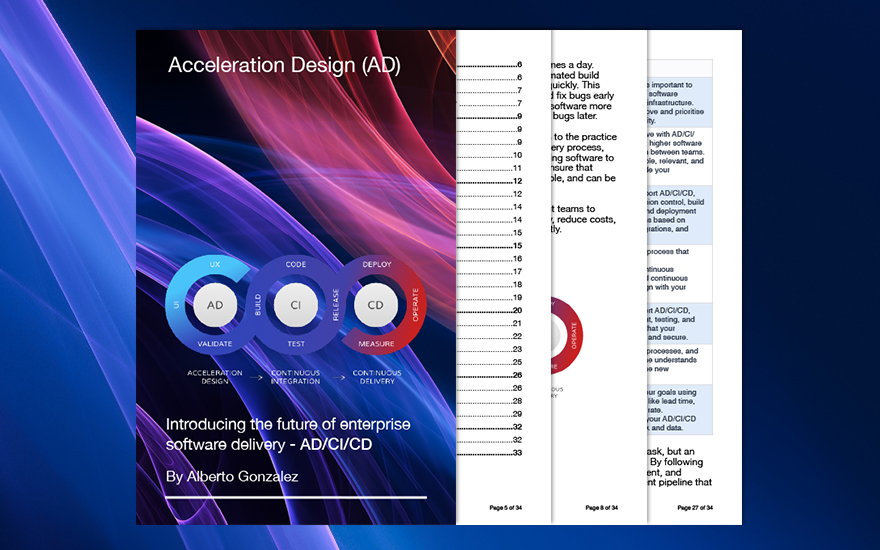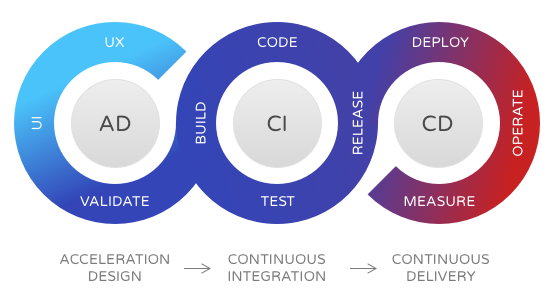




Get the AD/CI/CD E-book: Accelerate Your Software Delivery Today
The E-book is now available!
Demonstrated to be the swiftest, most efficient, and most pioneering methodology!
Contact us to receive the E-book with 34 pages in PDF format!
AD/CI/CD stands for Acceleration Design, Continuous Integration, and Continuous Delivery. It is a set of practices that help software development teams to deliver high-quality software products in a more efficient and faster way.

Introducing the future of enterprise software delivery - AD/CI/CD! With its cutting-edge Acceleration Design, Continuous Integration, and Continuous Delivery practices, AD/CI/CD is the most advanced software delivery process on the market today!
Together, these practices help development teams to increase their agility, improve software quality, reduce costs, and deliver software faster and more frequently.
Acceleration Design (AD) is a critical part of the CI/CD pipeline, as it focuses on designing software in a way that facilitates fast and efficient delivery. The traditional approach to software development involves designing software in large, monolithic pieces, which can be difficult and time-consuming to update and deploy. AD focuses on breaking software down into smaller, more modular components that can be updated and deployed independently, enabling developers to build and deploy software faster and with greater reliability.
This approach is a breakthrough innovation because it changes the way software is developed, making it more agile and adaptable to changing business requirements. By breaking software down into smaller components, developers can focus on building and testing each component independently, which reduces the risk of errors and makes it easier to maintain and update the software over time. This approach also makes it easier to scale software, as developers can add or remove components as needed, without disrupting the entire system.
In addition, AD supports the use of cloud-native design principles, which involve building software that is optimised for deployment in the cloud. This approach leverages the scalability and flexibility of cloud computing to make software delivery faster and more reliable.
AD is a breakthrough innovation because it enables development teams to build and deploy software faster and more reliably than ever before, which is essential in today's fast-paced business environment.
What are the benefits of Acceleration Design?
Acceleration Design (AD) is a critical component of the CI/CD pipeline, and it offers several benefits, including:
AD offers significant benefits to development teams, enabling them to build and deliver high-quality software faster and with greater reliability.